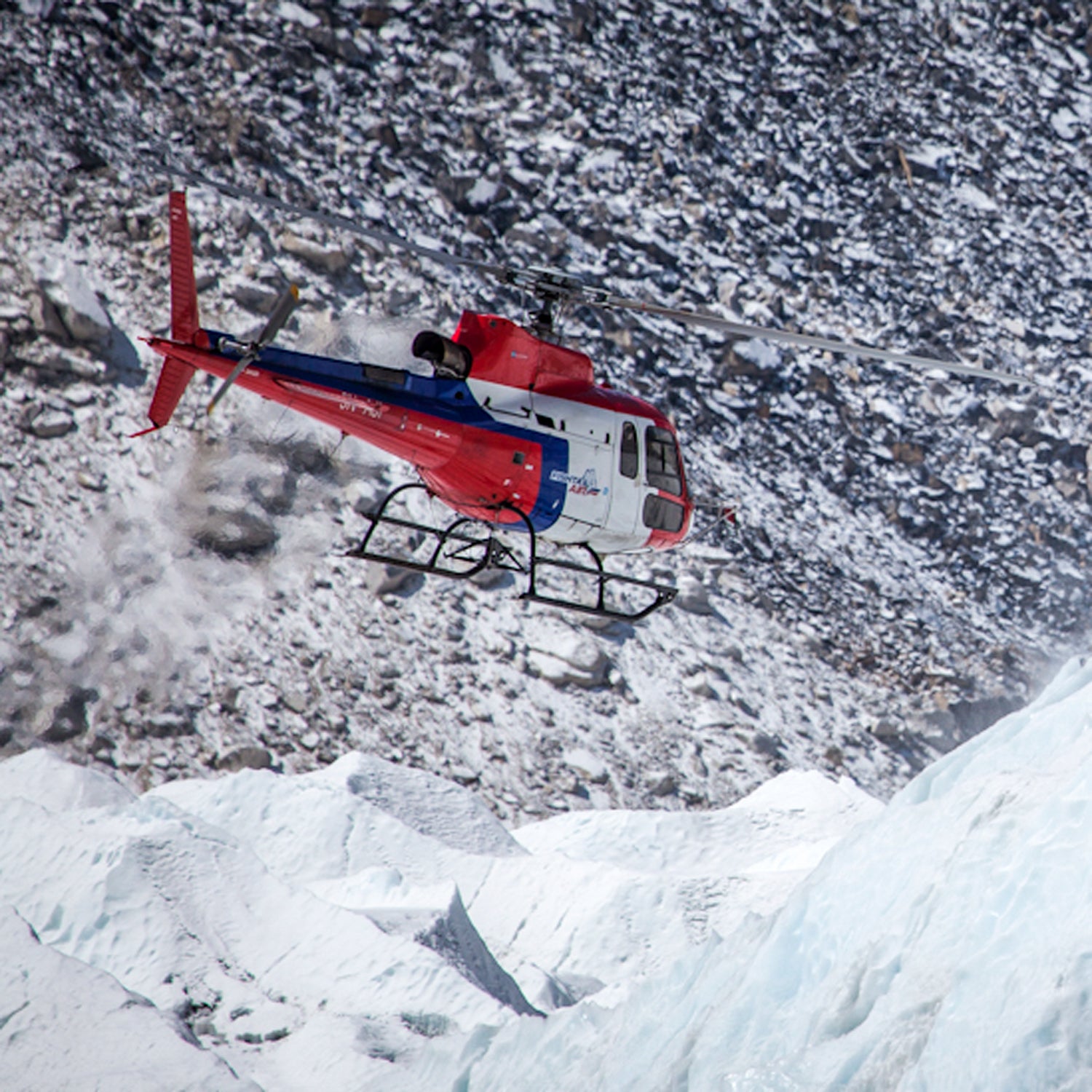On Tuesday, the Nepal Mountaineering Association announced that itĚý to ever be attempted on Everest. The goal: retrieve the body of Ravi Kumar, a 27-year-old Indian climber who went missing on Saturday after summiting. Kumar reportedly became too weak to walk duringĚýthe descent and his guide abandoned him near the summit at around 8 p.m., leaving him with supplemental oxygen and descending the mountain to call for a rescue. (The unidentified guideĚýappears to have barely made it to Camp IV himself, and is reportedly suffering from frostbite.) Kumar’s body was discovered on Monday in a crevasse at 27,500 feet—well intoĚýthe so-called Death Zone, where life becomes impossible to sustain for long periods of time due to the amountĚýof available oxygen.
It is not uncommon for climbers to die on Everest. Earlier this season, climber Ueli SteckĚýfell while attempting to climb Nuptse, a 25,791-foot mountain adjacent to Everest.ĚýNor is it uncommon for teams to recover bodies, as they did with Steck. But at that altitude, the risk to rescuers is extremely high. Above 26,000 feet, it’s impossible for one man to lift or drag another. Often the risk of such a mission is deemed too high to be seriously considered.
Most people might assume that Kumar’s body would never be recovered. HeĚýis inĚýa 200-footĚýcrevasse near the summit of the highest mountain on earth, a mountain that is famous for its constantly changing ice and weather conditions. A summit along fixed ropes is a risky endeavor on its own. So the idea of nearly summiting, descending into a shifting crevasse, climbing back out of the crevasse with a bodyĚýladen with gear, and then safely returning to Camp III, where the body will be picked up by a high-altitude helicopter,Ěýseems almost beyond the realm of human capability. And yet a team will attempt it for one simple reason: money.
That’s not to say that Kumar’s relativesĚýdoĚýnot have a right to grieve. They do. But that does not mean that a team of “at least 10 high altitude climbing guides,” as the Kathmandu Post says will be required, should risk their lives over it.
It doesn’t even seem like they want to. Just read that story’s quotes from Ang Tshering Sherpa, the and current president of the , and Chowang Sherpa, head of , the outfitter that Kumar hired to guide him up the mountain. “The precariously balanced ice can tumble down at any time. It’s extremely difficult and dangerous,” Chowang told the Post. “There is a 50/50 chance of survival for the rescuers,” Ang Tshering told them.
No matter the opinion of the Sherpas who must carry out the mission, though. The Indian Embassy, the Post reported, made it clear to the Nepalese government that the body must be recovered, no matter the cost. Nepal’s government is highly reliant on foreign aid, particularly when it comes to development projects and the effort to rebuild infrastructure in the countryĚýafter the 2015 earthquake. India to Nepal each year and pledged more than $1.4 billion to help in its rebuilding efforts. That’s a big stick to wield in negotiations.
Even then, the Post reported that the talks at the Indian Embassy in Kathmandu between Indian officials and representatives from the NMAĚýtook nearly two hours. Only after India agreed to bear the cost—which is estimated to approach $70,000—did the NMA agree to carry it out. “As it is a matter of family grief, we decided to take the risk, but the Indian government should guarantee the funds needed for the operation,” ĚýChowang told the Post.
After all, those that attempt the mission will reportedly be paid $1,000 a day for the four or more days that Ang Tshering estimates the rescue will require. Even the best-paid Sherpas only make $6,000 or so a season. Insurance payouts if they are killed or injured aren’t much higher.
It is unclear when, exactly, the recovery will be attempted. The team will need an extraordinarily wide weather window——in order to be able to get up to the mountain, down into the crevasse, and back down the mountain again. If successful, it will be one of the greatest feats in the mountain’s history. If any of the men perish, though, what then? Should the Sherpas leave his body behind? Should they abandon a member too weak to walk in order to get Kumar’s body back to Camp III? One thing is almost certain: if one of the Sherpas dies in that crevasse, it is unlikely anyone will footĚýthe bill to retrieve him.


